Game Pile: The Cleanup!
With the cleansing ritual of excusing a number of physical games from my Game Pile, I decided it was also time to make a ritual of making it clear a number of 2019 digital games that had definitely, definitely left my Game Pile. Presented here is a lightning round of Games that I tried in 2019 and didn’t feel I had anything to say about them. These games largely went unfinished, unless something provokes me to give ’em a second look – which can include you specifically asking me about it!
January 2020 Wrapup!
New year, new set of blog posts, new planning tools, and how have they gone? This month, I spent more time on blog posts for longer, which made it so some blog posts were kinda longer than I really expected them to be. There are fewer 400-500 word posts, and a lot more 1000 worders. I am real happy with the article about Sidekicks, which even gets to do a funny Sonic The Hedgehog thing, I liked my article about Overwhelm, where I learned a valuable lesson about difficulty in games, and for just being funny on its own merits, I liked my article about the Taco T-Shirt Cannon.
This month’s video was a stilted little half hour of me running around playing a little bugge and trying very hard not to cough in your ear… and it turns out I didn’t render it correctly. Don’t worry, I will be fixing this and reuploading, but thanks to CanCon, I haven’t had that time to work.
Shirts! I had a lot of great shirts this week, with three different Allstar Themed designs:

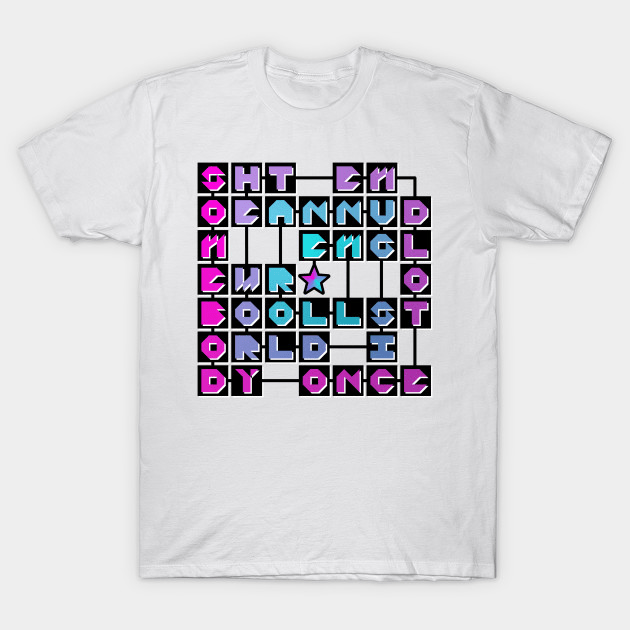

It was CanCon month! That eats a ton of time and space! Then, I took the great opportunity to be sick for a week! While we were getting ready for CanCon! That was a terrible idea!
Still, we’re here, we’re okay, and things are not as bad as they could be, so let’s keep going! ♥
Cancon Debrief
CanCon2020 is over, and with it, a time to decompress, to take a deep breath, and to recover. It’s also a weekend full of short stories.
Customer Feedback
We talk about our games a lot over the course of the weekend. Commonly, people buy games on day 1, take them home, play them, come back and talk about them, and in many cases, buy more, which excites me a lot. Several of our games have stood the test of time, in my opinion, and players are likely to talk about liking them. Now, I know that people are inclined to be kind in person, and I understand that, but it’s still easy to be and stay mad if you feel wronged.
Basically, I haven’t, it seems, pissed anyone off.
There are still ways our games can be improved, and there are some details on that front.
One weird thing that happened was we sold most of our copies of Cafe Romantica, a game we simply did not expect to sell well at this con and which I almost left most copies at home. It’s a great game and I’m a fan of it, but it’s surprising to me that this weekend, it did well. This is something about our current line up I have to grapple with: That a bunch of our games are doing their main job of being part of a selection for people to browse. I only sell one or two copies of some of our games, and I don’t need all of our games maximally available at all times, but success is a matter of rolling lots of dice, and so, more games is more dice.
What did I learn?
Access Issues
One thing I got to do a lot this weekend was explain my games to people in terms of things that make the game good for them. This meant being honest with people about player counts and game complexity – kid games have a whole range of design needs, and if you were looking for a dense, complex game, most of our games aren’t quite there. Social deduction, planning ahead, drafting games, all sorts of talk about people who may or may not be aware of the kind of things I’m talking about – there’s a lot to be done explaining and understanding games, then doing it again twenty times in the day.
Some holes in our collection though:
- All our adult-targeted games are reading heavy. Our kid-aimed games are reading light, but if you have reading difficulties, our card games that are aimed at adults are hard to play.
- We have one cooperative game. Still haven’t fixed this, despite it being Fox’s and my current favourite kind of game to play.
- Lots of social deduction games, not as many ‘watch a system work’ games.
Handling The Heat
CanCon this year happened on a very hot weekend, but not the hottest; we’ve had worse days. The main thing that happened this time was we planned our day to minimise the amount of times we left the building; one trip to another building, at the start of the day, then minimal leaving afterwards. We had stocked up on water, we stayed in cool locations, and we made sure our transport was done in as few trips as possible. Even then, it was still awful dealing with things like getting into a car that was full of stuffy air and heated metal fittings.
That said: I need to get a hat. I felt the sun on the back of my neck and side of my face a lot, I should do something about that. Also also: I got a haircut before I went down and that was a really good idea.
The Haul
I did buy some games, including a ‘mystery box’ game box, which was a cool looking pile of games in a mystery booster. That means there are some games I got that I was planning on getting, some games I got I was not planning on getting.
First, when I was interested in the storage solution for Star Realms, the day after I wrote that, Star Realms held a kickstarter for a deluxe box. Then I looked at that and realised: No, I don’t want that. Instead I decided to buy a $12 Ultimate Guard deckbox, which will do fine for my base copy of Star Realms. I’m not here to all-in on it.
I did see some of those games, and in the light of having them, didn’t want them enough. That’s okay! I found something else instead, and that’s the glory of Ding-And-Dent and Bring-And-Buy. There’s stuff that just I wouldn’t have thought of.
What I did get however, is, just as a list:
- Katamino
- Purrlock Holmes Furriarty’s Trail
- Ninja Taisen
- 10′ To Kill
- Among Thieves
- Rox
- Bang!
- Aerion
- Realm of Sand
- Newfoundland Jam
- and Sakura Arms
Maybe you’ll see some reviews of these!
January Shirt (And December Shirts): All Star Fandom!
I teach a class on memes. I make shirts. I watch as people spend real money on white t-shirts manufactured by a millionaire who has no reason to want to bilk people out of money beyond sheer ego. And I exist in a cultural space that wants to recognise the disposable pulp media as being as worthy of academic consideration as classics, and that’s why I sometimes put serious effort into things that I can only describe as silly.
I also have musical taste that we can at best described as ‘arrested 1999,’
Anyway, here are Decembers’ shirts, and January’s as well:

This is a design I’m taking to call a peer shirt, where someone needs to actively look at it to work out what it is. It’s great for logo designs like the loss shirts or other subtle joke signalling, the kind where someone has to ‘get’ it.

This started out asan attempt to make some text look superheroic, as a test of the method. Then I realised my test text, which was a joke, worked really well and I liked it.
 And this one is a complicated, elaborate and colourful spiral that hopefully takes a good few moments to work out, but is rewarding once you do.
And this one is a complicated, elaborate and colourful spiral that hopefully takes a good few moments to work out, but is rewarding once you do.
You can check these designs out on Redbubble or TeePublic, and remember when you buy shirts I made, you are helping me get pizza, and I’m hoping I help you get a big laugh.
Story Pile: Sonic The Hedgehog Movie But Not Really
Hi hey, thanks for clicking, we’re going to talk about Sidekicks.

I promise it’s related.
Continue Reading →Leaving The Game Pile
I talk about games a lot.
The origin of the game pile, which I’ve explained a few times lately, was to be a sort of documentation as I worked through a large pile of games I’d gotten in part because of the generosity of a kind friend, and my own rarer purchases. It also focused heavily on my digital game collection at first, and way back when I even had the idea of starting a subseries of game pile, called cheap thrills which was about finding games that had twenty or more hours of reasonable playtime for only $5, and was going to feature a lot of older DOS and Abandonware games that still had their charms.
The original purpose behind Game Pile was, to an extent, a sort of documentation of the process of working my way through my presents. There’s guilt and all sorts of other feelings there, and ambitions for a life writing for some source like Polygon or Waypoint that has since dissolved in a mist since August 2014. Not only has its original purpose changed, though, It has since grown to incorporate board games, and board games are different to my steam library because board games are physical objects.
The physicality of these games means that when I’m done with a game there’s something I can do with them – it means that I can package that game up, and, assuming I haven’t broken it, I can let it go. I am not bound to the game, nor is it bound to me. A steam game is a little string of numbers next to my name in a directory that I access with a password that let me put a copy of a program on a computer. From the people who made it’s perspective, there’s no reasonable value to letting me treat that code like a physical object, but with a tabletop game… they can’t stop me. That’s kind of the default of how most products worked, up until we got used to this other normal.
CanCon Prep And Experience
Right now, it is CanCon 2020! Yaaay!
For anyone not familiar, CanCon is the Canberra Gaming Convention, the largest tabletop gaming convention in Australia, and certainly the largest one conveniently available to us. It’s three days of tabletop gaming, with no entry fee, a huge hall of tables for a whole host of games, and in the convention centre in the middle of a, well, let’s call Canberra a city. It’s air conditioned, infamously, on one of the hottest days of the year, and you can turn up and come play board games at the game library, you can play Magic or Warhammer tournaments, you can shop or play with your gaming group and it’s all great fun stuff.
We’ve been doing CanCon now for… I want to say three or four years and I thought I’d talk a little bit about things that CanCon entails for me.
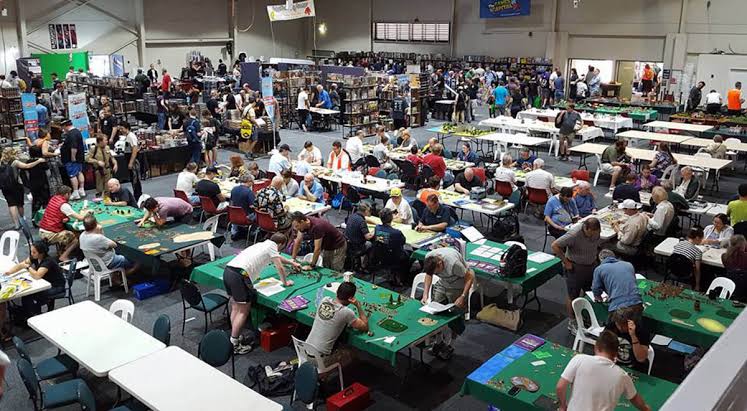
First, CanCon happens two hundred and fifty kilometers from my home so obviously I don’t commute it, especially as someone who doesn’t drive. It’s three days, so, unlike most of our cons, we lodge in Canberra for the days in question. This is nonstandard for me and it means that I have to do a lot of preparation for existing outside my normal work areas. A big part of this means trying to sleep, since I’m a restless sleeper. I don’t just listen to ASMR videos because I like getting weird questions about ‘is that a sex thing?‘ but also because the soothing sounds helps me sleep. And oh lord, sleep is important this weekend. Sleep is so important this weekend, because over three days an hour of sleep debt just gets carried and there’s nowhere for it to go.
We need to take stock with us to Canberra, no mulligans. This means that any stock we don’t have, we don’t have, so if someone comes looking for a particular game, that is it for their chance to see it. But every single gram of weight we take with us has to fit inside the car and that has to fit in the car with us, and it has to last us three days. That’s not nothing, too. That means we plan ahead and we pack up tight and we try to get our stuff right… but there are still problems.
Part of it is timing. CanCon happens early in January. That means if we have new games that want to come to CanCon, we need to order stock of them before CanCon and we need to order stock of them to meet the demand at the biggest con. Which we literally do not know because nothing else compares to it. That means a stocktake and a projection, and because of shipping times, that stocktake needs to happen right before Christmas, which is also scary as heck, because then we’re investing in stock at the time when our personal funds are you know, dealing with Christmas.
Another problem is that sometimes we overstock of a game and understock of another game. Not anything ill-intentioned, just woops, we packed a lot more Crowdfund This than we did of The Botch Is Back, and one of those sells better than the other. What do? Nothing, you just gotta lump it. It’s a weekend. It’s the work.
Right now, the die have been cast. What mistakes were made ahead of time have been made and there’s nothing to be done about them, and that’s okay. Now it’s time to sit at the table and let the day unspool, meeting people and talking about games and seeing what they find fun and interesting.
If you’re in the area, swing by, look around, maybe you’ll get to see me, and be disappointed in real life!
Game Pile: A Bit Of Hollow Knight
Originally when uploaded, this video was completely blank. Here’s the video I meant to upload, sorryyyyy.
13 Games I’m Hoping To Get Cheap At CanCon, Unless I Don’t
It’s CanCon this weekend! I’m going to be running a stall down there, selling the latest and greatest of Invincible Ink indie card games, art and bricabrac. It’s the hottest weekend of the year, traditionally, and I’m going to be in a city that has air quality comparable to Beijing, because the country is probably still on fire as I write this.
The Cyberbard
Ever feel deeply embarrassed because you misplaced your notes and wound up committing an act of self importance in a way that nobody but you is likely to care about? Yeah, me neither. Anyway, in 1997, Janet Murray wrote a book called Hamlet on the Holodeck: The Future of Narrative In Cyberspace, and that book is a wild ride.

Now this isn’t going to be an Academic Blog Post (I mean I should save those for my Academic blog, smash cut to a bleached white skeleton gathering dust), but the book (which received an update in 2016) is a long form examination of the way that computers and communication technology was going to change our capacity for storytelling, with whole new theatres of technology opened up to the audience who could simultaneously engage with the work presented to them and create feedback loops that meant that the audience could shape the story that they best wanted.
This is kind of how things worked out, and kind of not, and you can look at the way that the internet has deformed the production of shows like Game of Thrones and Westworld for examples. Mixed in this book (which again, I’m only glancing through here) is an idea of the cyberbard. See, Murray was interested not just in how future stories in an online space were going to be created, but interested in how the tools for making those future stories would be created. She conceived of some truly dizzying stories being made at the level of, well, theatrical productions, and largely, the things she predicted did not happen.
Except the things she predicted, then arranged to have made, those are cool.
The notion of the cyberbard roots itself under the bard; the idea that there is a storyteller who can gauge reactions and give proper responses, fed by and feeding the audience in the loop of the communal storyteller. The bard did not just tell you a story they knew, they told you the story you were asking for, and the cyberbard is that same idea, expanded out into the realm of technological constructions.
There are a lot of things to cover in this book (it’s a good book, I liked it), but the idea of the cyberbard as an extension of technology and as an expression of the tools made to make those technologies is one of those ways that sometimes in academia we use small words to look through a mirror at an enormous conceptual space. The cyberbard is a storyteller conceived of and managed by a computer and it’s the way we build the tools that allow a non-cyberbard to make these stories and it’s the way that the rules of a cyberspace create the opportunities for these stories to be made. It’s dizzying!
But, in amongst all of this there are two specific examples I want to bring people’s attention to, because Murray was not writing about videogames, but about communication technology. She talked as much about things we’d identify now as blogs and web serials as she talked about the control interface of Janeway playing in the holodeck.
The first idea is that she suggests that any system of play in which you engage with a narrative, layered upon it, that changes the way you interface with the story, could be seen as a cyberbard. In videogames, this isn’t just the game itself, but rather, a system that lays atop the game, and encourages you to engage with the story in a way you might not otherwise, for a piece of specific feedback.
In this case, the Let’s Play’s need for content is a cyberbard; the twitch streamer engaging their audience is a cyberbard; and so to is the achievement system, directing the player to do things they wouldn’t do simply to be marked as having done it.
The second, and perhaps larger idea is the notion of a transcendental, collective artwork, an example of theatre, where people could gather and discuss and express their wants for the story going forwards, and the author could, in the mean time of the making of the narrative, enact and express that multimedia story. The book seems to think this would be being made like a television series, a soap opera with shooting and actors (even virtualised ones). What she didn’t anticipate was a massively democratised production apparatus, which meant that these dramas were being made not by people with access to enormous budgets, but people who could harness the right kind of focused attention and engagement.
In 1997, I feel, Janet Murray predicted Homestuck, though she never would have said so.
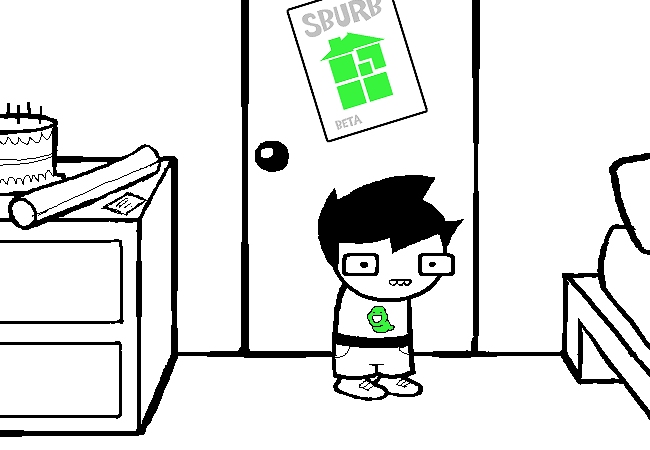
I’ve had this in the drafts folders for two years, get out of here, you curse’d blog post.
Dubmissiveness
There’s a particular generation of Anime consumers for whom the sub vs dub argument was not a point of preference, it was a vision of quality. It is not just that dubs lost nuance or made mistakes, but that the voice acting of dub voice actors was sufficiently bad to make the entire prospect moot. Perfectly translation and nuanced writing aside, the argument goes, dub voices are just much, much worse.
It’s almost like a play or something:
SUB: You see, dub voice acting is simply much worse than sub voice acting.
DUB: Do you speak Japanese?
SUB: No
DUB: Then how do you know if the voice acting is better or worse? The sub voices could be dogshit
SUB: Ah, you see – the important thing is that I can’t tell.
I’m sympathetic to how facile this argument sounds but it’s also not completely impossible to grasp. See, even if you can’t appreciate the way language is structured, there’s an emotionality in the human voice that a good can convey just as easily through a language barrier. There are cultural wrinkles between them but broadly speaking, if someone shouts in Japanese you can tell that they’re shouting.
Now, I can’t speak globally for this, because ultimately my sample size for normal anime fans is to check in with Fox, who is an inhuman stack of extremely persnickety cartoon trolls in a bag with a face on it, but this impulse to see ‘Japanese voice acting’ as a superior version to the English version, language agnostic, seemed to be not entirely an isolated phenomenon. I spoke to a few people, then spoke to a few people more, and eventually, I saw someone I never asked volunteering this idea on the spot.
Now, I want to make it clear, I haven’t watched much recent dubbed anime. As an exercise, I watched all of Fullmetal Alchemist: Brotherhood dubbed, but that’s ten years old and change. I have not been listening to dubbed anime in the past few years at all, and therefore all this sentiment, all this idea comes from a historical position that may have no more bearing on it.
I’ve talked in the past, about how Haibane Renmei got to exist thanks to a culture of common shared creative media that shows respect and audience for fan work. And, look, this runs the risk of running into goofy orientalism of oh, the Japanese voice is a superior voice, even beyond language and no, that’s stupid. But consider this.
Japan generates about 60% of the animated media in the world.
In Japan, there are over 130 colleges that teach voice acting.
In Japan, voice actors are draws to the work they do.
In America, I could not find a single college with a dedicated voice acting course. And there was a lot of hits for voice training, but that’s all theatrical performances. Voice acting is seen as a subskill of existing media – and when we do high level professional voice acting in the west, it tends to be seen as something you teach existing actors to do. Oh there’s a cadre of excellent voice actors that we know (hi Frank Welker, Charlie Adler, Jennifer Hale) but knowing those names is inside baseball. Notice that Welker is in part in such demand because he can do so many different voices, where he can replace animal sound effects. That paints the fact that voice acting, in the west, is a work where you expect to maximise value out of a small number of workers!
Now, it was even worse back in the 1990s, where voice acting and dubbing was in some cases being done by literally whoever was on hand at the time, and that kind of thing (probably?) doesn’t happen any more. Last year, there was a big fuss about David Hayter doing a meme voice, reading a tweet aloud in the voice of Solid Snake, because people seemed to be blown away by the idea that someone might pay a voice actor to voice act. Like he’d have something better to do? Like it wasn’t his job?
It costs about $70 for you to get Solid Snake to send you a birthday wish!
And he’s one of the best known names in the business!

Time to time I’ll use the term media landscape. The notion is that you aren’t just looking at a single piece of media in isolation, but the place you live, the life you’ve lived, and the kinds of media that surround you form a context for the work you’re looking at. You can change your media landscape, but more than that, you can look at the media landscape of any particular work to put that in a context.
Are Japanese subs better than dubs? No. But the support and infrastructure for helping Japanese voice actors be the best they can be is so much better than the support and infrastructure helping western voice actors. But then, I’ve written about that before.
Story Pile: The Meg
There’s a game we play when we talk about movies. You watch a movie, then, you, trying to represent the movie reasonably, tell people the things that actually happen in that movie, and you see how long it takes for the audience to stop believing you. It’s great. We’ve all done it, surely.
Anyway, so in this movie, it opens by exploring the ocean that’s hiding under the ocean.
Now imagine me stopping and taking a drink.
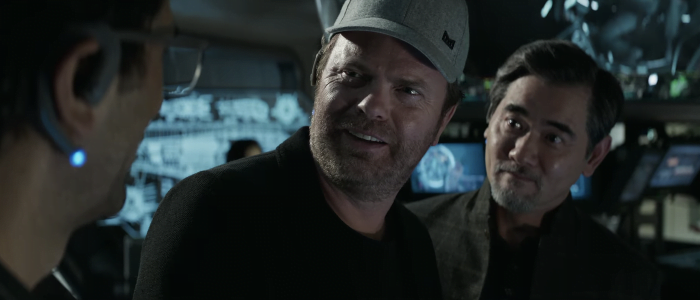
Before we go on, some content warning points; this is a movie that does stuff with submarines and containment and holding your breath, so if you think you’re going to hate a movie about being sutck in submarines and small chambers, yeah, this is absolutely going to be upsetting as hell.
Onwards!
Taco T Shirt Cannon
it exists!
No really! 
I listen to a lot of Podcasts (I think, I haven’t checked what a normal amount of podcasts is, and I know that some Extremely Online people like me sometimes listen to a neverending wave of them and so maybe I don’t listen to that many but anyway) and that means that I bob along a flow of information like a discarded champagne cork cast into the ocean after a particularly enthusiastic ship launch. It’s possible that some things become a funny item on a particular podcast for one moment and then they’re gone and nobody ever mentions them again, which means that some amazing and ridiculous things can be lost to time.
One of those things is the knowledge that in 2013, in Philadelphia, the 76ers (who I assume are a team of number enthusiasts) unveiled their Taco T-Shirt Cannon at the Fun Fun Fun music festival and not, as I initially assumed, some kind of worship festival in the name of a dread god of excessive gun related preposterousness. That festival featured Run DMC, who I have heard of, which means the news story gets to be relevant to me, I guess.
At the core of it, a Taco t-shirt cannon operates on almost all principles of low-impact projectile toys; it has a launcher system that relies on building up CO2 gas in a tube rapidly, which results in propelling an object that’s about the same size as that tube out at a high speed. T-shirt cannons aren’t new, and gatling t-shirt cannons aren’t new either; the central principles were all worked outback in the 1850s. What’s more, hot dog cannons aren’t new either; the hot dog being a phallic food bullet already means that it seems pretty easy to wrap one in some paper, make it snug, then use the force of overengineered nonsense to huck it into a crowd at high speeds (but not too high speeds).
But it was in 2013, as far as I know, that some enterprising soul first got it in their head to ask how they could take this t-shirt cannon principle and take it to the next, extremely silly level, with the invention of a device that wants to be a t-shirt cannon that is also a taco cannon. I learned about this from British podcast The Bugle in its pre-2016 incarnation, which is noteworthy for being where John Oliver first really got work reading the news at you in ways that make you laugh at being depressed.
Okay okay, enough fannying about, you obviously want to see it.

This prodigious pile of pipes is not just the byproduct of what you get if the A-team were locked in a modern hardware store and the only way to defeat the smugglers this week was to construct a sky dick that would let them collectively fuck the moon, it is a fully operational t-shirt taco cannon.
What you get is a fresh, hot, soft-tortilla taco, wrapped tightly in paper, which is then wrapped in a t-shirt, which forms the sabot for the taco. You set it in the tube, which is then ratcheted into place, then discharged with the gas build up, into the crowd. It’s important that you angle the shot so that the taco-t-shirt mix is coming down rather than going up, so it’s effectively in the ‘slower’ half of its launch. These are important tips for the proper use of your taco-and-t-shirt cannon, a thing you’re going to definitely acquire.
All I’m really doing with this exchange is writing down something from my own history of podcasts, a long-lost shard of history that I find so funny that I don’t want it to go missing. I don’t think you’re going to listen to a seven year old podcast about ‘the news’ (literally now not true) to try and hear a funnier comedian than me share the same quotes from the original news story that I’m going to, so this is searchable and convenient and now you get to enjoy the quote that’s why I sometimes go: Oh yeah.
The taco and t-shirt cannon.
The quote, from Matt Mandrella, marketer and event manager for Fun Fun Fun, is about the first thing I worried about:
“We’ve actually had a couple of people hit in the head, and we know there’s been no pain involved. [The victims] were more like, ‘oh man, I got hit in the head by a taco. It was great!’”
CoX: Rift Girl
I’m a superhero fan, which is to say I’m someone with a lot of very firm opinions the way the superhero media industry is just ruining everything, and completely messing up. This is a natural part of the progression as you get older, but I at least am at the point where I can bring myself to acknowledge it’s much more I don’t like this rather than this is good or bad storytelling.
Comics love weirdo aliens that are human-mindset compatible (like M’gann M’orzz). Comics love alternate dimension characters that come from a different universe that’s somehow meaningfully mostly like ours (like Power Girl). And despite loving M’gann and Peej, I really dislike these two ideas. In a shared roleplaying space like City of Heroes, you don’t get the leeway to just tell people hey stop making characters I don’t like, though, and I’ve come to terms with that.
When presented with a problem like this, though, a good impulse is to work out why things are different, work out what you’d do to make the thing you don’t like work in a way you do. Which is why I wondered how I could make a Suspiciously Human Alien or Extradimensional Person in a way that didn’t make my brain flip sumersaults at the math involved.
What I got out of it is Rift Girl.
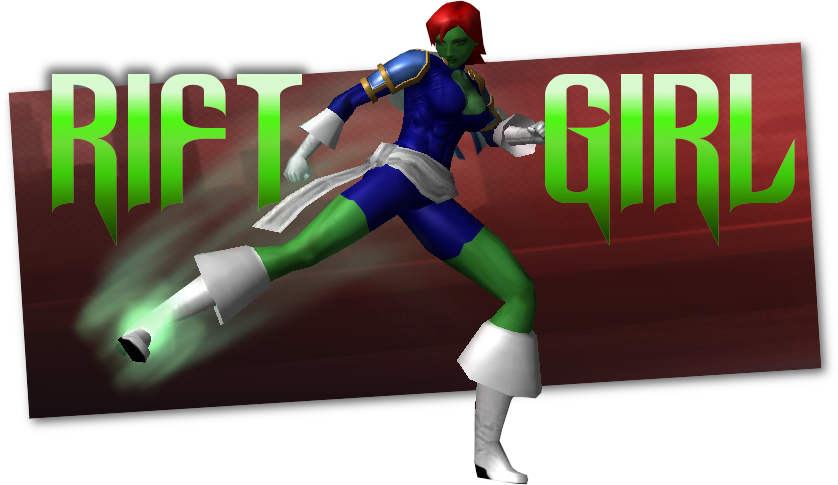
First up, here’s her in-game bio:
“But what are we doing here, at home, to fight the dreadful menace of The German Imperialism? Why, there’s some, like the top-secret RIFT project, storing away examples of the finest cities of the 20th century, in alternate dimensions where the people can grow and thrive, and become brilliant bosch-bashers! And as long as there’s funding, there’s no way to lose track of them, or see them fall to the work of the Hun! Stay tuned, for partial excitement!”
– Project RIFT explained, unreleased educational film, 1939Madison Max came from a place that’s a bit retro, a bit far away, and plenty, plenty weird. But that doesn’t matter – what matters more, to her, is that she’s here, in Paragon, to be a hero, and contribute to the fight against fascism!
Alternate dimensions and alien cultures are great if you want to give a character a kind of contained metaphysics. You don’t have to explain how they relate to the things in our world or why they may have missed something or other, you can just say that those things don’t exist where they’re from. These are societies you have complete control over, and it means if you want a character to come from a place where things work differently and people just have to accept it, you can. Consider a lot of our societal ideas we have that can be just different in a different society. Ideas like marriage, gender, violence, heroics, education or capitalism can be wildly different if you control a different space.
Alternate dimensions bug me though when they’re just one of a million options because it opens up too many questions for me. After all, why this and not that. Why are these changes able to have such wild transformations? Alternate dimension are written in between the space where they’re not realistically similar (in this world, one flower evolved to be peach instead of purple, and everything else is the same) or realistically different (if the mass of earth’s trajectory was off by a meter a billion years ago, literally none of anything would be ‘there’ when you went to reach into the other dimension). How do I get an alternate dimension that’s meaningfully like what we have here?
My idea was to make the alternate dimension a dimension built out of this one, and that gave me the idea I wanted: Nonsense Wartime Propoganda Super Science!
Rift Girl’s world is a pocket dimension made in the 1940s as part of the War Effort against the Super Science Nazis of the superhero universe. We blame so much stuff on this era of science (just look up the weird stuff people believe about the Philadelphia Experiment), and that gave me an aesthetic to start from. Bonus, it let me talk about the natural followup to a good thing (fighting Nazis) and the way our cultures managed that project (not preventing more Nazis later).
Rift Girl is from a city that was built as a self-sustaining environment in the desert in the United States, then super-science blinked into its own little parallel dimension where they could set the rules enough to make sure that entropy wasn’t going to be a big problem. The idea was that these cities would work as both safeguards against Nazi invasions of countries, and places to recruit and train the best possible Nazi-fighters ever. Then, because of funding cuts, these entire cities were lost to paperwork and time, and the Rift Cities fell out of contact with the Primal Earth. Some were decommissioned properly after only a few years, and one, Maddie’s home, was forgotten, lost in the shuffle, or deemed ‘too hard’ to recover.
Fast forward Some Years, and Rift City contacts Primal Earth, opening a portal they developed on their own with their limited materials, and send through messages and an Emissary – Madison Max. Thanks to a delay on broadcasts arriving in Rift City, she thinks it’s Prime Material Year 1999, and party for the millenium, even made herself some of those party glasses, and oh yes, to beat the shit out of Nazis.
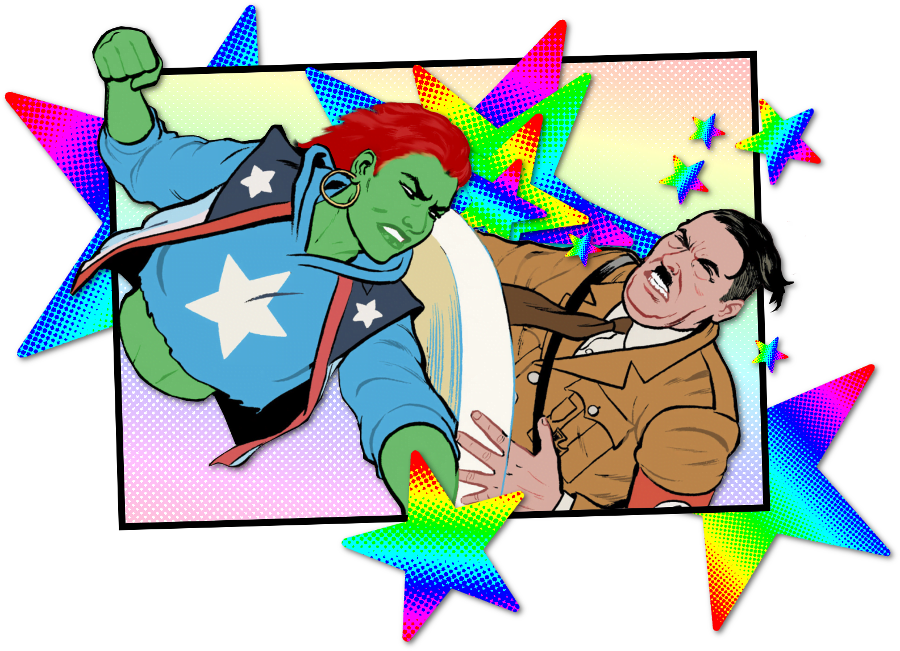
Madison was chosen for her task because she was basically a super over-achiever student, someone who was both obsessed with the Primal Earth broadcasts they were able to decipher and well-trained and disciplined. Smart, educated, extremely strong in a super-sciencey way, and given special, strange, rift-warping powers by having broken the ‘seal’ on the Rift City tunnel to Prime Earth, she’s ready to be a full blown superhero, punching Nazis and Saving the Day, just like all the TV shows she’s been bootlegging from Primal Earth have shown her.
Also, thanks to the way light worked in Rift City, she – and the rest of the Rift City people – have no idea that the time spent in the Rift has made them all green, or rather, that anyone is any colour other than green. She thought everyone she was on TV was green, just like her, and now she’s having to adjust to that. Also the twenty year time gap. Also discovering that contrary to how she was raised, Americans think Communists are bad, even though they fought Nazis so well. That’s weird.
Mechanically, Maddie is a Radiation Armour/Street Justice Tanker. In a way, she’s a pastiche together of Superboy and Miss Martian from Young Justice, a super-strong but visibly strange person from another world. The City of Heroes universe has four clear examples of actual honest-to-god fascists to fight and you know, that’s on my mind lately.
Game Pile: The Settlers
Oh hey, look at this! You’ve noticed the pictures to start with, because humans are visual learners, and you’ve probably heard this name before, and it doesn’t have a number after it so that suggests it’s either a 2020 reboot (and do you see me doing that?) or a super old DOS game (and hey, guess what). You may have put it all together and thought: Hey, Talen’s about to talk about an old DOS game, that started a famous franchise, and we’re going to get all sorts of talk about how videogames back in the day were so good and the pixel is the natural storage unit of fun, because he’s old and that means he’s going to speak to the value of retro games right?
Wrong!
I wanted to do that, because I have fond memories of, when I was a child, playing the demo of this game, a 1993 DOS strategy game by Blue Byte entertainment, a game company that has since been acquired by and made part of the Ubisoft coalition. It was for the time, technically impressive, and commerically, wildly successful.
And going back to play it again, this game is wildly unapproachable.
Continue Reading →The Immaterial Material: D&D’s Stuff
You know for all that D&D is seen as a story of heroic fantasy it’s awfully bitsy. I don’t just mean the way that D&D is a game that encourages a truly remarkable amount of special acquisition of items for play – how many people do you know who have a miniature for their characters? – I mean that the story that plays out in the game winds up being about stuff. Lots and lots of stuff.
I’ve been writing about ‘stuff’ in games lately, reading about how we treat material objects, and while there’s definitely a different kind of materiality when you talk about a playing card, a dice and a meeple versus the text on a page that reads +3 longsword, there’s still something to be said about the way that D&D, 3.5 and 4e especially (because those are the editions I know) focus characters over an inevitable wardrobe full of stuff.
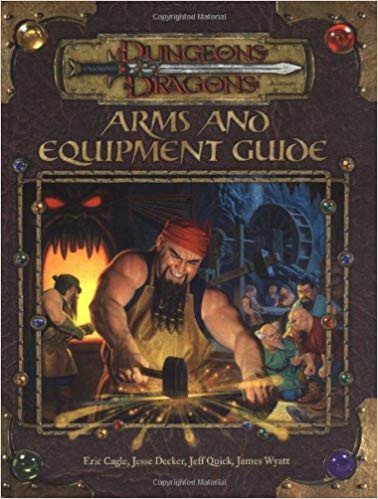
Now, there’s a reason for this, and it gets at one of the basic assumptions of the game that D&D wants to be. D&D ostensibly is a game about heroic fantasy, but connected to the idea of this heroic fantasy is a need for adventurers to be mostly, heroically empowered but still fundamentally scaled heroes that can be compared to normal people. It’s not the X-Men, it’s a place where your hero who swings a sword can’t be expected to cut through the bars of a prison, but if that sword was magical, then they could.
Now, this isn’t a bad thing per se, but it does tell you something of the basic assumptions of a world like Dungeons & Dragons and it’s a basic assumption that I’m used to seeing in a lot of, of all things, first person shooters. Yes, I’m probably going to talk about DOOM again, maybe.
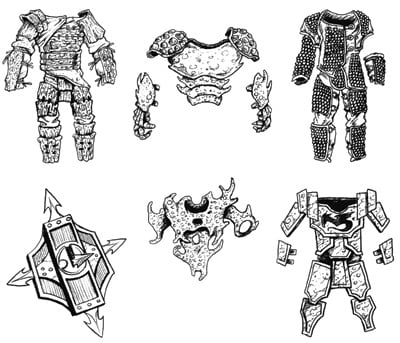
When you start to talk about what stuff is used for in D&D, it’s pretty easy to see that stuff can do a lot more than people can do. People are limited, they’re made of meat, and they’re not capable of long-lasting, permanent effects. Even the wizard has to spend spell slots to fly, but a pair of winged boots will take you into the air as long as you like. The boots are expensive, and that’s another element (the relentless roll of capitalism).
One other thing is that items can be systematised, because objects, we believe, behave consistently and repeatedly. Despite the fact that the D&D world is typically represented as pre-industrial (except the good ones), these items are made and represented as if they are in their own ways kind of mass-produced; a jagged fullblade from one continent will work the same as a jagged fullblade from another.
This is another funny detail about this worldview: The items you’re building and examining are being treated as if they’re just making a thing that can exist; it’s not a matter of someone choosing to create something to overcome a task or have an effect (and indeed, if you approach a DM with a specific request for an item function that isn’t from the existing ruleset, that can be seen as asking for something ‘too specific’). It’s not that you made a weapon that does more damage when it hits an opponent in a vulnerable moment – it’s that you made a jagged or vorpal weapon, and those existing elements have math to them.
Stuff gets to be consistent! Stuff gets to work, and keep on working! We live in a world full of machines that work consistently until broken, and it seems that that plays into how we want magical devices to work in D&D. We don’t find that unrealistic, that a character can wander around in a small town’s economy’s worth of super-specialised consumer goods that literally nobody non-Adventurey could afford to meaningfully buy, we don’t find it unrealistic that these objects can be somehow mass produced and we don’t find it odd that these things can do much more than a person can do, because we accept that it’s okay for objects to do these things…
… and that it’s not acceptable for people.
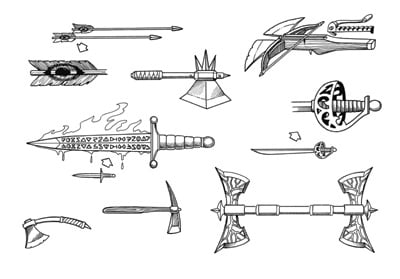
This plays into the way that the worlds of D&D are made, by the way. Not only are places like the Realms and Eberron full of underground caches full of fantastically expensive and yet still practically useful antique hardware, they’re also places that mysteriously have investors and traders who can be bothered making these goods and trying to sell them on despite their fantastically obvious market problems.
This relationship to stuff is one of the things that breaks easily when you start trying to use D&D for other stuff. Infamously, the game D20 Modern tries to dispense with the relationship to stuff, making mose equipment mundane and focusing the game instead around the ‘wealth check’ that gave you a general idea of what you were capable of buying. The result was that your stuff suddenly didn’t feel like it mattered, but your character never mattered as much as their stuff – so you mostly spent your time piloting around a pair of guns and a skill list.
Die Rich Development Diary
In December, you might have seen me tweeting about a game that is now known as Die Rich. Here are collected notes about that game in development so you can get a general idea of how these things go.
Flowers Can’t Bloom All Year
At this point, according to my very vague stats on the matter, I have been releasing a daily blog post for some time; in 2015, I blogged every day all year, it dropped off at some point in 2016, and I think from 2017 onwards, I just blogged daily and didn’t stop. I have remarked in the past about how I do things on this blog; I have backlogs and themes that help me keep producing. I’m one of those people who likes working on lists, so if I have a bunch of things that need to fit a theme, working on that theme can be very satisfying, and when I don’t find that engaging, I can work on another space afterwards. Part of just maintaining this blog well involves maintaining my engagement with the process.
But if I decide, tomorrow, that I don’t want to write, that’s okay and that needs to be okay.

A turn of phrase I’ve been using with friends who have achieved something then immediately found themselves lacking in satisfaction is – well, okay one thing I say is try gratitude journalling, which none of them have, but after that is flowers can’t bloom all year. Now, one of my friends, a botanist, helpfully pointed out that there are in fact some flowers that bloom all year, mostly in equatorial spaces, but then they went on to point out that one of them technically isn’t a flower, because flower has a fairly specific range of qualities.
We talk about creativity in a lot of numinous, wonderful ways. We describe it in terms of it being enriching and engaging and helping us grow and handle and process and develop and practice. What we sometimes avoid talking about with creativity is the urge, the need to stop.
You don’t need to be constantly creating. I seem to feel, right now, in my life, like I always want to be – I have dozens of creative projects ongoing and I find the task of organising them is lots of fun, and that means I keep wanting to keep cycling from one thing to another thing. But for some of my friends, they try out a creative effort, they make something…
And that’s it.
They’re done.
One day I’ll be done.
One day, I’ll not want to do anything more, and maybe I’ll take a break or maybe I’ll stop.
I don’t like bringing this up often because I think that our general condition is one where people are encouraged to never start, to never try, and to hate themselves for never completing. I hate hate hate it when I make some actionable, tangible advice about overcoming the mental roadblocks of making and realising your projects, some asshole comes along and says ‘or maybe I could repeat the advice everyone is already parrotting.’
Instaed what I want to make clear is it’s okay to stop. It’s okay to stop for a time and it’s okay to just stop.
You’re not bad because you’re not creating.
Story Pile: The Informant
Do you know what a shaggy dog story is?
How To Be: Edward Elric from Fullmetal Alchemist (In 4E D&D)
In How To Be we’re going to look at a variety of characters from Not D&D and conceptualise how you might go about making a version of that character in the form of D&D that matters on this blog, D&D 4th Edition. Our guidelines for this kind of project are as follows:
- This is going to be a brief rundown of ways to make a character that ‘feels’ like the source character
- This isn’t meant to be comprehensive or authoritive but as a creative exercise
- While not every character can work immediately out of the box, the aim is to make sure they have a character ‘feel’ as soon as possible
- The character has to have the ‘feeling’ of the character by at least midway through Heroic
When building characters in 4th Edition it’s worth remembering that there are a lot of different ways to do the same basic thing. This isn’t going to be comprehensive, or even particularly fleshed out, and instead give you some places to start when you want to make something.
Another thing to remember is that 4e characters tend to be more about collected interactions of groups of things – it’s not that you get a build with specific rules about what you have to take, and when, and why, like you’re lockpicking your way through a design in the hopes of getting an overlap eventually. Character building is about packages, not programs, and we’ll talk about some packages and reference them going forwards.
This time, we’re going to try and capture the feeling of Edward Elric from Fullmetal Alchemist: A Lot Of Different Things.
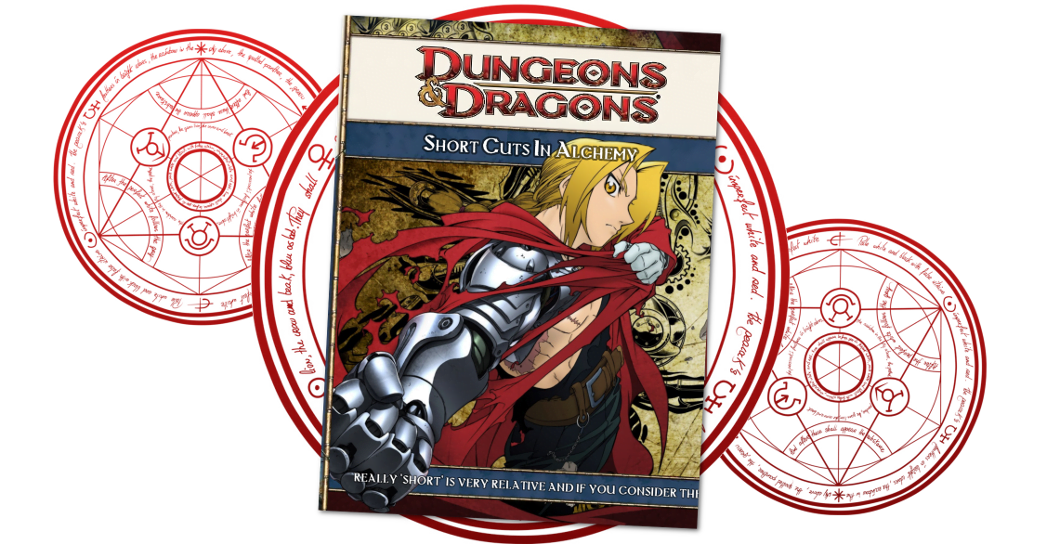
Kids These Days And Their Fortnite,
With the dawn of 2020, the first wave of Millenials, born in 1980, have to take a break from killing the Fabric Softener industry and deal with now being in their 40s and starting the chunk of time that gets called ‘middle age,’ and with that comes the obligatory desire to complain about kids these days. I’m not there yet, but I’m getting there.
Game Pile: Overwhelm
Overwhelm is a 2018 action-horror exploration platform game that uses a palette that feels gameboyish except instead of green and dark green its palette ranges between white and oh dear red. It’s not a specific hardware style I recognise – you wouldn’t call it ‘1-bit’ or ‘4-bit’ graphics as if that answers questions easily, but it does have that same crisp few- colours-deployed-sparingly of other indie classics like Downwell and Minit.
MTG: Stop Designing White Counterspells
Seriously. That’s it. Those four words.
Alright, fine.
White in the Throne of Eldraine standard period, isn’t great! It’s not very strong and uh, also in Commander, white’s not very strong, and so the Content Creation mill has kicked in and presented the brilliant idea of White Bad. The Magic community, being the reasonable well-rounded and thoughtful group of people they are have immediately leapt face-first into a wall.
We’re not good with handling conversations that need words.
One of the places that people have decided this needs addressing is by saying that white (which is the WORST COLOUR and ALWAYS SUCKS) needs to have CARD DRAW and RAMP and COUNTERSPELLS. Now, I’ve some sympathy to the problems presented before (and I’ve written about it), but the last one bothers me, because it’s the same, simple, looping argument. It’s very catastrophised and gets to involve things like ‘Maro doesn’t know what he’s talking about’ and ‘Maro hates white,’ which… yeah. Do I bust out the statistics and the historical context to address these arguments? Sometimes – it’s just it’s work, and because it’s social media, that argument drifts away and I have to go re-make it an hour later. I want it all centralised and convenient.
Here, then is my thoughts on why we should stop designing custom white counterspells. If you’re a Wizards employee, current or former, rejoice, because I’m not going to show any custom designs here or even talk about them in depth. I’m just going to go over the idea of white getting counterspells at all.
And first, some context!
Continue Reading →Building A Character in City of Heroes
I love building characters in City of Heroes.
This is going to be mechanical, by the way, not narrative – I have lots of views about how to build a character in a shared roleplaying space. This is about how I prioritise stats when I’m building characters in this game.
For those not familiar, City of Heroes characters get a number of abilities that let you do things, and then they get ways to improve those things. This is typically divided into ‘powers’ and ‘slots.’ Slots can hold things that improve things the power do – accuracy, damage, the time it takes to recharge, the duration of effects like stuns or holds – and so powers you want to do lots of things, you’ll give them lots of slots. You can’t just fill them with the same effect because there’s diminishing returns after the first two, which means powers tend to get a little bit of one thing, a little bit of another.
Now, that’s probably all that you’re going to get out of this unless you’ve played the game, because this is a big, complex system. If you really have no idea about it, the rest of what’s coming is going to be gibberish, so I’ve put the useful conclusion to all that here up front:
What we can see then is that – perhaps accidentally – this great big confusing mess of a game, that when you have a lot of systems at work, even if you have a fairly simple, linear method of progression (defeating baddies), there’s still a lot you can do to make the individual choices of a player expressive. Players can build towards their priorities.
Now, you might not be making an MMO, but you might be making a tabletop RPG. If you’re building in the modded space of games like Pathfinder or 13th Age, you’re in a similar space, and that’s when the time comes to look at your own creative efforts rather than necessary in terms of perfect balance, as instead about competing balance. See if you’re presenting players with enough choices that character building is full of interesting choices.
Also, if there’s something players should just have, then just… give it to them.
Now, if you want to keep going, here we go:
Practicing Making
I’ve talked about how everything you make is a step towards making the next thing, which is a nice sounding aphorism but recently I’ve found a lot of people with big, ambitious projects. Big ambitious projects are fine if you’re the kind of person who likes doing it, but I find they tend to work against what I think of as good creative practices.
I’m going to use an example here and I know you’re reading this and I don’t want you to be called out, but let’s say your project is a three book series. It’s going to be big and epic and you have visions of these multiple titles and again I am not calling out you, person who is reading this. I am just using this as an example.
The point is, if your project is three books, then it gets really hard to practice. The three books need to be done before you can look at them as a ‘complete’ project, and the sheer time investment in that kind of thing is immense. This is true if your project is a Fire Emblem game or a plane simulator or a video series on the history of the circus. These are not bad things to want to make, but they are all big, and as a direct necessity it’s hard to practice them.
It’s especially hard to practice them if you only want to try doing them.

This is something we sometimes call ‘scope.’ It’s a term used somewhat generically to refer to how big a project is, a sort of idea for how far back you have to be from the project, metaphorically speaking, to get a look at all of it. A short story has a different scope to a short story compilation and a short story compilation a different scope to a novella and so on and so forth.
I recommend the first thing you try to do is make something small. And sometimes, when I recommend this on twitter, someone will try and step up and speak in defense of big projects, which is well-intentioned ‘both sidesing’ but I think it’s actively harmful, bad advice. If you want to work on a giant project and only a giant project, you’re setting yourself a task that’s very hard, possibly impossible, and that means any progress at all feels like no progress. That’s something that depression loves to encourage, a sort of deliberate pursuit of nihilistic failure. It’s numbing.
Sometimes you pursue the giant project because you believe in yourself that much. That’s cool, but it can also be hiding a fear of failure. After all, if you write a short story instead of a book, what if that short story isn’t good? What do you do if you write a short story and you don’t like what you wrote? Or worse, someone else doesn’t like what you wrote? To that I say, hey, were you in a gifted program in school?
Another reason for the giant project is because sometimes you don’t appreciate what’s involved. I can give some numbers out there but people with scope problems often don’t appreciate how to examine or understand scope. If your dream is to write an animated series, you should start by getting involved in animation.
“But I can’t draw!”
So what? Get involved in learning how animation works. Study the topic, look at how animation goes together, learn about things like frame rate and cells and the kind of work scope required for a large project like an animated series. Learn about what a script looks like. Look at storyboarding. Every big complicated project owes some of its origin to a smaller, less complicated version of itself; animation comes from storyboards that come from scripts that come from treatments.
Make the smallest things you can, because the smaller it is, the easier it is to do it again. To practice. To practice again. To keep practicing, because the process of making something big is to make many small parts and to make something good is to practice until you know what good is.
My method, the method I recommend, the method I teach, is to make the smallest possible thing you can consider ‘a thing.’ Then when you’ve made it, you’ll have insight into what you don’t want to do, or why you don’t want to do it that way. And then you make the next thing.
With that in mind, make the first thing something you can make easily enough to get to the next thing.
Story Pile: A1A
Alright, so Jimmy Buffett’s supposedly discovered his Gulf-And-Western sound. We’ve had the mournful, serious songs that would have blown the doors off if someone ‘properly country’ had done them. Jimmy is now firmly established in something like four years as someone who’s clearly from Alabama, producing music in the south, and isn’t properly Rock to get on the radio that wants that in the 1970s. The lore is that he didn’t get much radio play at all at this point (and it was a point of contention he’d continue to bust on in his 70s albums). We already covered some of that last time, with Saxaphones basically being a whine about it, but it’ll continue here.
What came out next was an album which continues this same mix of different ideas. Rather than hammering on a single idea, or developing deep on this musical style, we get A-1-A, an album that feels like a greatest hits album for a guy who’d only been releasing albums for four years.
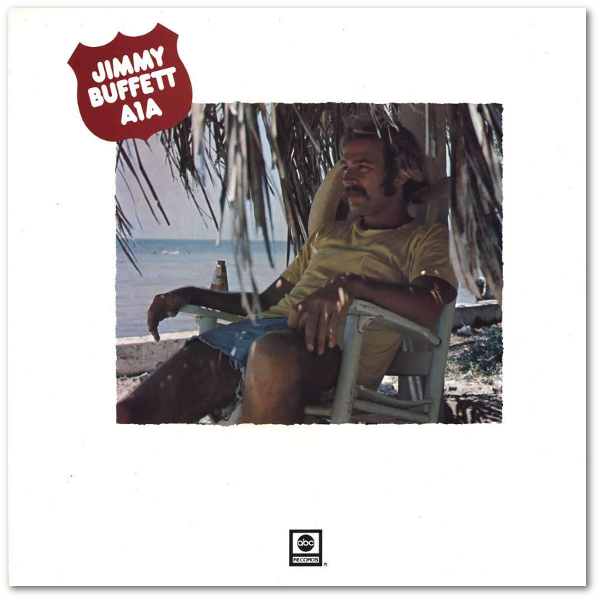
The album opens with such a riff. It’s funny to think this is what country used to be like, or at least, this is close enough to country to be throwing rocks. It’s funny because while I can definitely see some of that jangly, almost jug-band like musical feel to it, the opening song Makin’ Music For Money is sure a statement. This is one of the things about Jimmy Buffett as a singular creator that I really noticed growing up: he was definitely writing about what was on his mind at the time.
Some of his songs are kind of just generic love songs, using the june-moon-spoon formulas of music industry stuff. They’re not bad, but they’re so rarely a fave, often these meandering slow-swing songs that kind of want to hang out with You, Baby, Girl. But when he was writing about what he cared about you got these interesting statements of purpose like Makin’ Music For Money, the maudlin reflection of Stories We Could Tell and the too-too relatable A Pirate Looks At Forty. When this album came out, he was twenty eight, writing about a hypothetical future time when he would face down his own place in history, as he got older.
It’s a really lurching feeling, as this young man writes about how he’s going to get old, about how he doesn’t feel he belongs to his time (which, you know, lots of young people feel). It’s sad, and it’s a song that I remember hearing, the first time, around the time my dad turned forty. I was about five.
I remember there was something really mournful about it, and I had no idea what it was. I didn’t get it. I certainly didn’t get why my dad was so taken with this song about sleeping with younger women, committing piracy, and doing drugs (which I also didn’t understand).
Stories We Could Tell is one of those songs that really feels like it belongs to other, serious country singers too, guys who sing songs rhapsodically praising the work of men who died before he was born. It’s reverent, which maybe Jimmy was doing to try and get Nashville to like him. It’s not his song, and it’s been covered a few times (including by Kasey Chambers and holy shit I want to find that), but it feels so perfectly tuned to have been covered by – well, honestly, by Alan Jackson, fitting in alongside songs like Midnight In Montgomery. But then, if Jackson had covered it I’d have seen it as an entirely artificial attempt to borrow seriousness from better artists, because I don’t think much of Alan Jackson.
It also has Life Is Just A Tire Swing, which is a retrospective song about childhood and growing up and almost dying in a car crash. I remembered in that song that I ruminated on how my life, as a little kid, was probably just like this one, except I didn’t have any friends to hang out with and we didn’t go camping and we didn’t have fun and I knew I could hurt things. I assumed the narrator in the song got beaten up regularly. I realise in hindsight how weird it was but I assumed everyone relating stories about their childhood had stories they just didn’t mention about getting pinned down and stomped on.
The basic ideas of Jimmy Buffett albums are all here. Talking about the sea, startlingly specific references to what he was enjoying at the time, retrospective mourning a lost past, and convenient alcoholism. Migration is a song that’s basically impenetrable to me as an adult, but it had an upbeat rhyhthm to it and it talked about a swearing parrot so I listened to it a lot. When I was asked a few years ago about songs by Jimmy Buffett off this album that mattered to me, I did name Migration (and a song of another album, but anyway), because… I remembered liking how upbeat it was.
I do have a favourite song off this album, though, Nautical Wheelers, and it’s probably for the silliest reason. See, this song has a tempo change in it.
It has probably the first tempo change I ever noticed.
It’s a simple song, with a waltz of a chorus. It doesn’t carry a lot to it. It’s positively G-rated for a song about getting drunk, staying up late, and having a party where you dance with people underinspected.
I was raised to hold on to a Bible verse: I have learned in whatsoever state I am, therewith to be content. It was the idea that you could just be happy being, and we did all sorts of hoop jumping, all sorts of nonsense to justify the way we made ourselves so intensely miserable while we claimed we were all joyful in the LORD. In all my time at church I never saw anyone, anyone who was ever content.
And this song about nothing much was my first vision of the idea of some people who were happy being unremarkably okay.
So, the Album is fine, it’s not got any of my all-star favourites, but it’s still got a lot of Extremely Important moments from my formative little mush-brain growing up. I still realise there’s some of the creative coda in Making Music For Money in my mind, where I realise making is more important to me than success at making. There’s still shards of the fatalism of passing forty. There’s still images of an old guitar haunted by the person who played it last. Is it a best album? Nah. It has to, after all, measure up to its nearest neighbours, which doesn’t do the album any favours.
MTG: Crumby Engine
Throne of Eldraine really has a mark on its name as being a set that led to one of the shortened banning spans. It’s really rough, because as bad as Oko is as both a character presence and the impact he had on standard, there are some cards in Throne of Eldraine I didn’t expect to like, and even missed wholesale that have crept up to be some of my favourite kinds of card.
I do like playing around with uncommon engine cards, and one of the sadder things to me about small sets or sets that do poorly is how uncommon engines often have to make do with only the cards in their set and that’s it. This isn’t engines like you see in Innistrad where we’re absolutely going to see more werewolves if we go back there, it’s the sets that failed to catch an audience. Sometimes an engine gets support outside of its block and still isn’t good enough (hi there, [mtg_card]Earthshaker[/mtg_card]), and sometimes the engine card is great but there isn’t adequate support for it in the format (hi there, [mtg_card]Sylvan Echoes[/mtg_card]).
And yes, I have tried making all of these work.
It’s a long path we’ve walked to get here, but well, you don’t come to my blog if you’re not willing to follow a [mtg_card]trail of crumbs[/mtg_card].
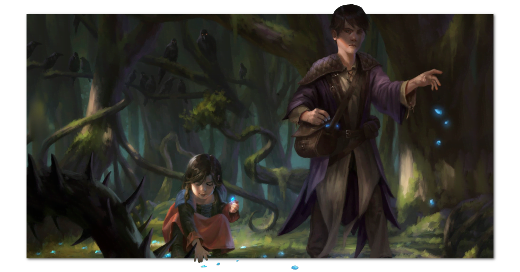
I don’t doubt we’ll see Eldraine again, but I suspect it’ll be a while and I suspect that while means that for now, Trail of Crumbs has to do all the work it can with what it’s got. Jund and Golgari Food has been tearing up standard for a while now, and it’s also a deck where you can make a meaningfully cheap version and don’t lose out on how the deck works. I even lashed out and bought myself some Lilianas and Vraskas and have a neat little standard two-coloured version of this deck (thank you Patrons).
Blogging Tool – A Schedule!
Hey, do you want to write more?
I write a lot, and you may notice that if you frequent this blog and notice that for the past thousand days or more it’s pretty much always been updated with something new, that hovers around the 200-500 word mark, depending on how well I keep focused on my point aardvark. Well, part of how I keep a schedule of my blog going is having a chart for if I’ve got a post set up for the next day.
I also have ‘events’ each week; two posts that fit a schedule, Game Pile and Story Pile, and they happen on specific week days. I made something for that, which I used to do on my bullet journal, which was great, except for two things I learned the hard way:
- Tracking one full year in a paper book can get pretty tatty.
- Any time I misplace my bullet journal, I kind of get paralysed about what to work on next.
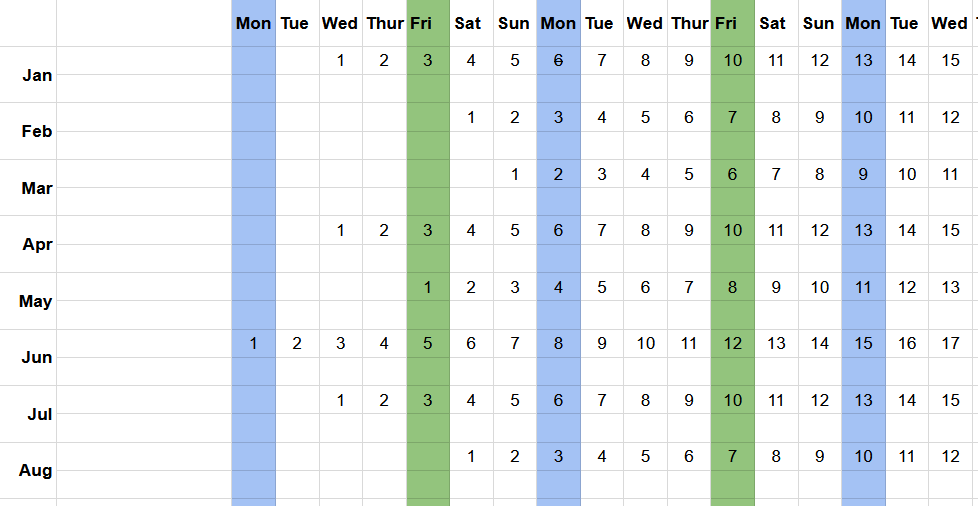
With that in mind, for my blog tracking, I decided it was time to set something up that I could access as conveniently as my blog itself, and so, I made a google sheets spreadsheet for this. And since it’s a handy tool, and you can just copy them if you use google sheets: Here!
It’s pretty simple. By giving each month a theme or notes, I can make sure that any articles that don’t necessarily fit a current month may go in a later one that fits it better. By having these trackers on hand I can make sure I don’t do four or five articles on a theme in a month and risk boring audiences that don’t like them. This lets me look at my work overall, for a whole year, and plan ahead.
Just a little tool! Hope it’s useful!
Game Pile: Forbidden Island
When I talked about Century: Golem last year, I referred to mastery depth, where the way that experience playing a game makes you better at playing the game – and that meant that for some types of game, playing with new players was an experience of watching them lose because they hadn’t yet learned to play at your level of mastery.
I also talked about how much I wanted to have more cooperative games, and how I also need some games that are kid-approachable for my niblings to play, because games without winners and losers are important for managing times when everyone is all a bit stressed and it’s a bit much.
Forbidden Island was a late addition to my collection last year, and I think it’s worth bringing up as an excellent game for a game collection, even if the game itself isn’t that big a deal, especially if your collection has games that maybe, to you, look a bit ‘better.’
Rapture Ready Pets
Hey, here’s a thing that exists.
Okay, now you may read this and have some questions. Meet me after the description.
For those of you who don’t want to click the link and check it out, it’s a link to After the Rapture Pet Care, a website that offers a paid service (a small one-time payment of $10) to arrange for volunteers of non-Christian religions to promise to take care of your pets after the rapture. The rapture is this belief in some types of Christianity that Jesus will return, take all the living Christians (sometimes) to Heaven with him and then the world will spend its time ending in a few different cycles. It’s a weird belief and it’s part of how the people in charge of the US government are ruining the world.
But let’s not dwell on that, let’s talk about the idea of pet care and rapture preparation, because this thing opens up my mind to one particular question that I imagine you might have now.
Is this a parody?
Well, here’s the problem. It is possible the people who made this website don’t believe it. It’s possible the people who pay money for the service or for the merchandise don’t believe it. It’s possible that nobody involved in this process is doing it seriously and it’s all a joke. You could categorically assert that nobody like this really exists, so the website is a joke about the idea of what if it is. That could be a funny joke, but then the question that follows that is okay, how many people are serious?
How many people have bought into it?
And now the thought that festers for me: How many people didn’t have anxiety about their pets after the rapture until now?
You need to know that these people really exist. They do. They’re all around you and they’re very typical and they’re not even that exceptional. They’re conspiracy theorists on a cosmic scale, with nothing ever able to prove that their idea is foolish. And when they do exist, you’re left looking at this website and thinking: Even if it’s a joke, how different would this look to the serious veresion of what it is?
2020 Blog Plan
Alright, let’s look forward to 20/20!
Currently, this blog is a daily blog. Every day, there’s an article, with each week featuring a Story Pile article and a Game Pile article. Story pile is when I look at a piece of media (like a TV series, a movie, an album, or something sometimes more obtuse), and Game Pile is when I look at a game. I also release, each month, a Video on Youtube, and a t-shirt design.
That’s it! That’s the basic plan.
Now, what I’m going to be doing this year is laying out our schedule of theme months. Every even numbered month is going to have a theme, all concentrated into one spot. I like theme months, they give me something to focus on, and our themes this year are as follows:
- February is SMOOCH MONTH
- April is TALEN MONTH
- June is PRIDE MONTH
- August is TRICKS MONTH
- October is DREAD MONTH
- December is DECEMBERWEEN
Last year taught me that forward planning is valuable, and now I’m trying to do that with an even longer view. There are articles that came out in 2019 that in hindsight, I would have wanted to put at a different time of the year – to put them in a theme month that fits them best. That means that right now I’ve made a few articles that are sitting way down in the hopper. I’ll share how I plan that out later, but for now, expect a bit more cohesion.
There are also a few types of articles I like doing but I want to space them out in the interest of not just repeating myself endlessly. There’s room for one-and-two parters like I did with 2019’s orc-and-elf articles, but I want to keep the blog varied rather than just burrowing down into one topic for a long time. Twitter is really good for those momentary obsessions, the blog is where I want to tidy it up.
Here are the things I expect to do once a month, maybe pushed around a bit to avoid landing in theme months:
- One Magic The Gathering article a month. You might see two, if I’m feisty.
- One How To Be article. These take some planning and research.
- One Jimmy Buffett album article. These are super easy and I don’t wanna just spit them all out at once.
- One 4th Edition D&D Themed Article. This is stuff like overviewing specific books or character classes or things 4e did that differentiate it from 3.5, or things you should borrow for your characters or your own games.
- One 3.5th Edition D&D Themed Article. It’s super easy to dunk on old books which I can now critically regard, and I don’t want to be too mean but I do love going back and looking at weird or dumb 3.5 game rules or flavour problems.
If this sounds okay to you, great! And if you’d like more of any of these things or less of them, let me know. I want this blog to be approachable and fun and engaging, and understand these are not the only things you’re going to see.
Overall, the thing that most likely gets an article type reiterated on is positive reactions. Someone once told me she didn’t read the magic articles I wrote, and because I had no other responses on that front, I just… didn’t write any magic articles for a bit. Then someone said they really missed them and boom they came back.
If there’s content you want, ask me for it, because odds are really good I’ll respond and try and do more of it.

